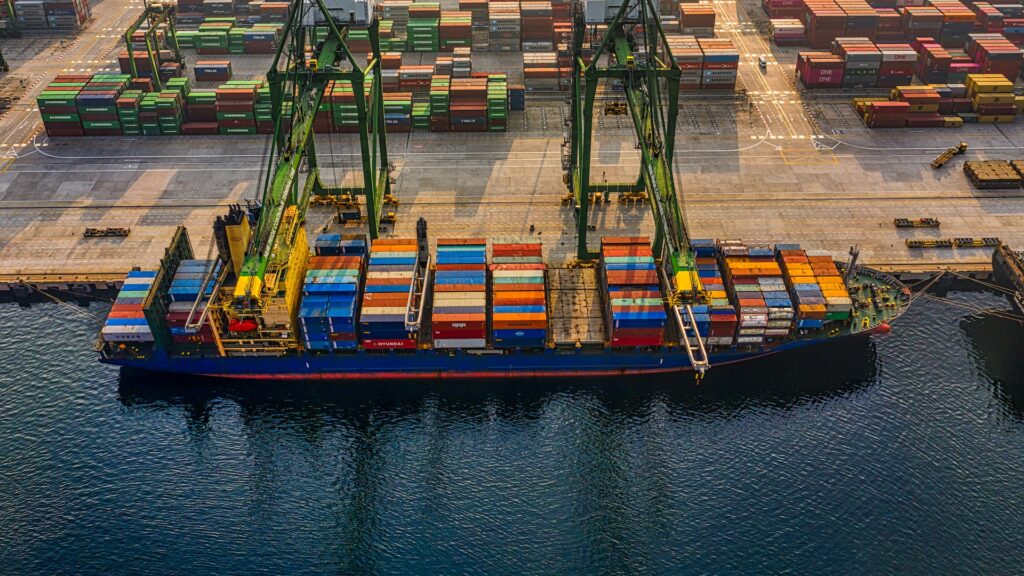Transportation Industry Market Overview
The Global Transportation Industry Market reached USD 7.31 trillion in 2022 and is expected to reach USD 11.1 trillion by 2030 growing with a CAGR of 5.4% during the forecast period 2023-2030. The global transportation industry is driven by various factors such as urbanization and population growth, rising demand for online shopping through e-commerce platforms and infrastructure development.
Furthermore, investments in transportation infrastructure, such as roads, railways, ports, and airports, play a vital role in expanding the transportation industry. Governments and private entities are investing in infrastructure projects to enhance connectivity, reduce congestion, and improve overall transportation efficiency.
Asia-Pacific holds a major share of the global transportation industry market and countries like China and India hold more than 2/3rd at the regional level. China, in particular, has a massive transportation industry market due to its large population, extensive manufacturing base, and strong export-oriented economy. The country has invested heavily in building an extensive network of roads, railways, airports, and ports to support its domestic and international trade.
Transportation Industry Market Scope
| Metrics | Details |
| CAGR | 5.4% |
| Size Available for Years | 2021-2030 |
| Forecast Period | 2023-2030 |
| Data Availability | Value (US$) |
| Segments Covered | Mode of Transportation, Service, End-User and Region |
| Regions Covered | North America, Europe, Asia-Pacific, South America and Middle East & Africa |
| Fastest Growing Region | Asia-Pacific |
| Largest Region | Asia-Pacific |
| Report Insights Covered | Competitive Landscape Analysis, Company Profile Analysis, Market Size, Share, Growth, Demand, Recent Developments, Mergers and Acquisitions, New Equipment Type Launches, Growth Strategies, Revenue Analysis, Porter’s Analysis, Pricing Analysis, Regulatory Analysis, Supply-Chain Analysis and Other key Insights. |
Transportation Industry Market Dynamics
Increasing E-Commerce And Global Trade
E-commerce relies heavily on efficient shipping and delivery services to fulfill customer orders. With the rise of online shopping, there has been a surge in demand for transporting goods from sellers to buyers. This increased demand directly benefits the transportation industry, leading to a boost in the market. The E-commerce industry has shown unprecedented growth in the past few years leading to create huge growth prospects for the transportation industry.
For instance, according to India Brand Equity Foundation, the Indian e-commerce sector is expected to grow by 21.5% and reach $74.8 billion in 2022. By 2030, it is anticipated that India’s e-commerce business will be worth US$350 billion. The recent increase in digital literacy has resulted in a surge of investment in e-commerce businesses, leveling the playing field for new companies to establish their bases and generating novel patterns to challenge established behavior.
Technological Advancements
Technological advancements have led to improving the transportation industry. For instance, automation technologies, such as robotics and artificial intelligence, have improved efficiency in various aspects of transportation. Automated systems for cargo handling, inventory management, and maintenance processes have streamlined operations, reduced human errors, and increased productivity.
Furthermore, the development of autonomous vehicles, including self-driving cars, trucks, and drones, holds significant potential for transforming the transportation industry. These vehicles have the potential to enhance safety, optimize fuel efficiency, reduce traffic congestion, and lower transportation costs.
Regulatory and Legal Barriers
Transportation companies, whether they operate domestically or internationally, must comply with a wide range of regulations and legal requirements. These regulations can include safety standards, environmental regulations, labor laws, customs and border control, and licensing requirements.
Complying with these regulations often involves significant costs for transportation companies, such as implementing safety measures, conducting regular inspections, training employees, and acquiring necessary permits or licenses. These compliance costs can strain the financial resources of companies, especially smaller players in the market, and potentially limit their growth and competitiveness.
For more details on this report – Request for Sample
Transportation Industry Market Segment Analysis
The global transportation industry market is segmented based on the mode of transportation, service, end-user, and region.
Road Transportation Flexibility In Terms Of Routes And Destinations, Enabling Door-To-Door Service For Passengers And Freight
Road transportation has shown the highest growth in 2022 covering more than 42.3% globally due to its widespread accessibility, allowing direct connectivity to various locations, including remote areas. It offers flexibility in terms of routes and destinations, enabling door-to-door service for passengers and freight. This versatility makes road transportation a preferred choice for many industries and individuals.
Furthermore, road transportation dominates the passenger transportation sector, accounting for a significant share of total passenger trips globally. According to the International Transport Forum, road transportation accounted for around 75% of total passenger kilometers traveled in the European Union in 2018. Between 2020 and 2021, the transportation of European road freight increased by 6.5%, mostly due to significant growth in all types of operations. Similarly, in the U.S., road transportation accounted for around 86% of total passenger miles traveled in 2019, according to the Bureau of Transportation Statistics.
Source: DataM Intelligence Analysis (2023)
Global Transportation Industry Market Geographical Penetration
Asia-Pacific’s Rapid Economic Growth, Urbanization, Changing Consumer Preferences, And Advancements In Technology
Asia-Pacific holds some of the biggest transportation networks across the globe and rising trade leads to escalate the transportation industry market. Rail transportation is significant in the Asia-Pacific region, especially for long-distance freight and passenger travel. Countries like China, Japan, and India have extensive rail networks and high-speed rail systems. China’s high-speed rail network is the largest in the world, covering thousands of kilometers and connecting major cities. Rail transportation is a preferred mode for bulk goods and intermodal freight movements in the region.
Furthermore, the region is a major hub for air transportation. It is home to some of the busiest airports in the world, including Beijing, Tokyo, and Dubai. With increasing urbanization, rising incomes, and growing tourism, air travel has experienced significant growth in the region. In 2019, Asia-Pacific accounted for the largest share of global passenger air traffic, with over 3.5 billion passengers, according to the International Air Transport Association (IATA).
Source: DataM Intelligence Analysis (2023)
Transportation Industry Market Key Players
The major global players include BlueDart, Danzas, Exel, DHL, Aramex, Northrup Grumman, Wallenius Wilhelmsen Logistics, Alaska Air Group, C.H. Robinson Worldwide, and CSX Corp.
COVID-19 Impact onTransportation Industry Market
COVID Impact
With travel restrictions, lockdowns, and social distancing measures in place, there has been a significant decline in demand for transportation services. Air travel, in particular, experienced a sharp decline as many countries imposed travel bans and people limited their non-essential travel. Passenger rail, bus, and public transit systems also saw reduced ridership as people stayed home and limited their movement.
Furthermore, the transportation industry plays a critical role in global supply chains, and the pandemic disrupted these supply chains on a large scale. Restrictions on movement, border closures, and reduced staffing at ports and logistics centers led to delays and bottlenecks in the shipment of goods. The maritime industry, in particular, faced challenges with crew changes, port congestion, and reduced shipping capacity.
Russia-Ukraine War Impact
The conflict has led to disruptions in trade between Russia and Ukraine. Border closures, checkpoints, and heightened security measures have made it more challenging for goods to move smoothly across the border. This has resulted in delays, increased transportation costs, and reduced trade volumes between the two countries.
Furthermore, the conflict has had implications for maritime transportation in the region, particularly in the Sea of Azov and the Black Sea. The Kerch Strait, which connects the two seas, has experienced increased tensions and restricted access due to the conflict. This has affected the flow of goods and led to delays and uncertainties for maritime shipping companies operating in the area.
Scope
By Mode of Transportation
- Road Transportation
- Rail Transportation
- Air Transportation
- Maritime Transportation
- Others
By Service
- Warehousing and Storage
- Smart Ticketing
- Parking Management
- Traffic Management
- Passenger Information
- Freight Information
- Vehicle Telematics
- Others
By End-User
- Logistics
- Maritime
- Mass Transit Freight
- Shipping
- Household
- Public Transport
- Others
By Region
- North America
- The U.S.
- Canada
- Mexico
- Europe
- Germany
- The UK
- France
- Italy
- Russia
- Rest of Europe
- South America
- Brazil
- Argentina
- Rest of South America
- Asia-Pacific
- China
- India
- Japan
- Australia
- Rest of Asia-Pacific
- Middle East and Africa
Key Developments
- On April 11, 2022, The Ministry of Electronics and Information Technology’s (MeitY) Intelligent Transportation System Endeavour for Indian Cities Phase-II initiative resulted in the introduction of a native Onboard Driver Assistance and Warning System (ODAWS), Bus Signal Priority System, and Common SMART iot Connectiv (CoSMiC) software.
- On July 28, 2022, Flexport, the platform for global logistics, and Nolan Transportation Group (NTG), a division of Transportation Insight Holding Company (TI) and a leading provider of non-asset, tech-enabled logistics and brokerage solutions in North America, announced a strategic alliance to integrate their technologies for improved visibility across global supply chains. All types of transportation, including Full Truckload (FTL), Less-Than-Truckload (LTL), Expedited, Drayage, and Final Mile, will be covered by the partnership’s technology-enabled solutions.
- On February 15, 2022, MercuryGate International, Inc, announced the integration of critical delivery and intelligence capabilities into its platform. These elements are part of an exclusive capability called Smart Transportation.
Why Purchase the Report?
- To visualize the global transportation industry market segmentation based on mode of transportation, service, end-user, and region, as well as understand key commercial assets and players.
- Identify commercial opportunities by analyzing trends and co-development.
- Excel data sheet with numerous data points of transportation industry market-level with all segments.
- PDF report consists of a comprehensive analysis after exhaustive qualitative interviews and an in-depth study.
- Product mapping available as Excel consisting of key products of all the major players.
The global transportation industry market report would provide approximately 61 tables, 69 figures, and 211 Pages.
Target Audience 2023
- Manufacturers/ Buyers
- Industry Investors/Investment Bankers
- Research Professionals
- Emerging Companies
Source: https://www.datamintelligence.com/research-report/transportation-industry-market



